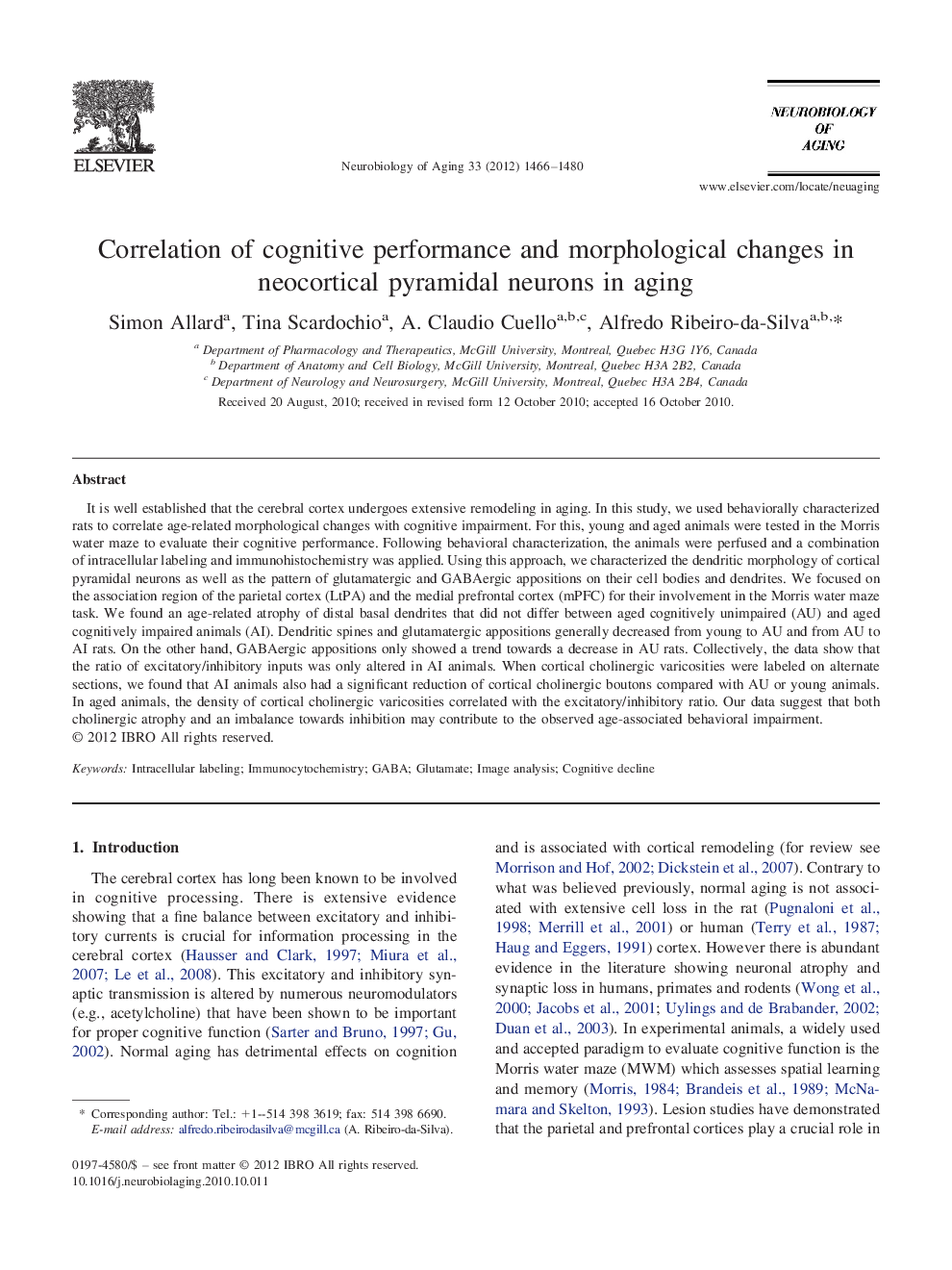| Article ID | Journal | Published Year | Pages | File Type |
|---|---|---|---|---|
| 6808909 | Neurobiology of Aging | 2012 | 15 Pages |
Abstract
It is well established that the cerebral cortex undergoes extensive remodeling in aging. In this study, we used behaviorally characterized rats to correlate age-related morphological changes with cognitive impairment. For this, young and aged animals were tested in the Morris water maze to evaluate their cognitive performance. Following behavioral characterization, the animals were perfused and a combination of intracellular labeling and immunohistochemistry was applied. Using this approach, we characterized the dendritic morphology of cortical pyramidal neurons as well as the pattern of glutamatergic and GABAergic appositions on their cell bodies and dendrites. We focused on the association region of the parietal cortex (LtPA) and the medial prefrontal cortex (mPFC) for their involvement in the Morris water maze task. We found an age-related atrophy of distal basal dendrites that did not differ between aged cognitively unimpaired (AU) and aged cognitively impaired animals (AI). Dendritic spines and glutamatergic appositions generally decreased from young to AU and from AU to AI rats. On the other hand, GABAergic appositions only showed a trend towards a decrease in AU rats. Collectively, the data show that the ratio of excitatory/inhibitory inputs was only altered in AI animals. When cortical cholinergic varicosities were labeled on alternate sections, we found that AI animals also had a significant reduction of cortical cholinergic boutons compared with AU or young animals. In aged animals, the density of cortical cholinergic varicosities correlated with the excitatory/inhibitory ratio. Our data suggest that both cholinergic atrophy and an imbalance towards inhibition may contribute to the observed age-associated behavioral impairment.
Related Topics
Life Sciences
Biochemistry, Genetics and Molecular Biology
Ageing
Authors
Simon Allard, Tina Scardochio, A. Claudio Cuello, Alfredo Ribeiro-da-Silva,
